Agroforestry
Agroforestry is the practice of integrating trees into agricultural systems to create complete, multi-level ecosystems in our food-growing areas. Read on to see how we work with trees to create dynamic and regenerative ecosystems.
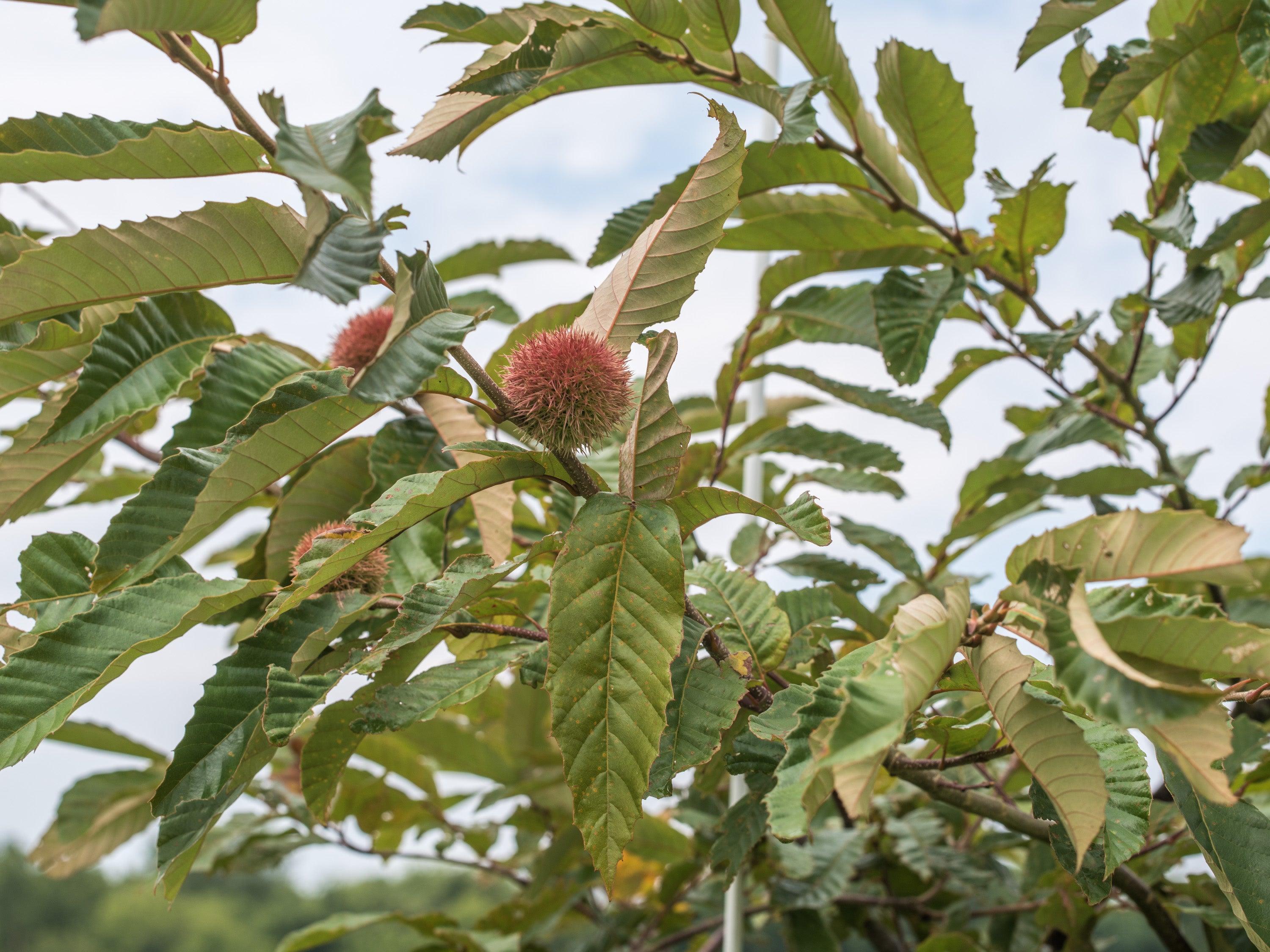

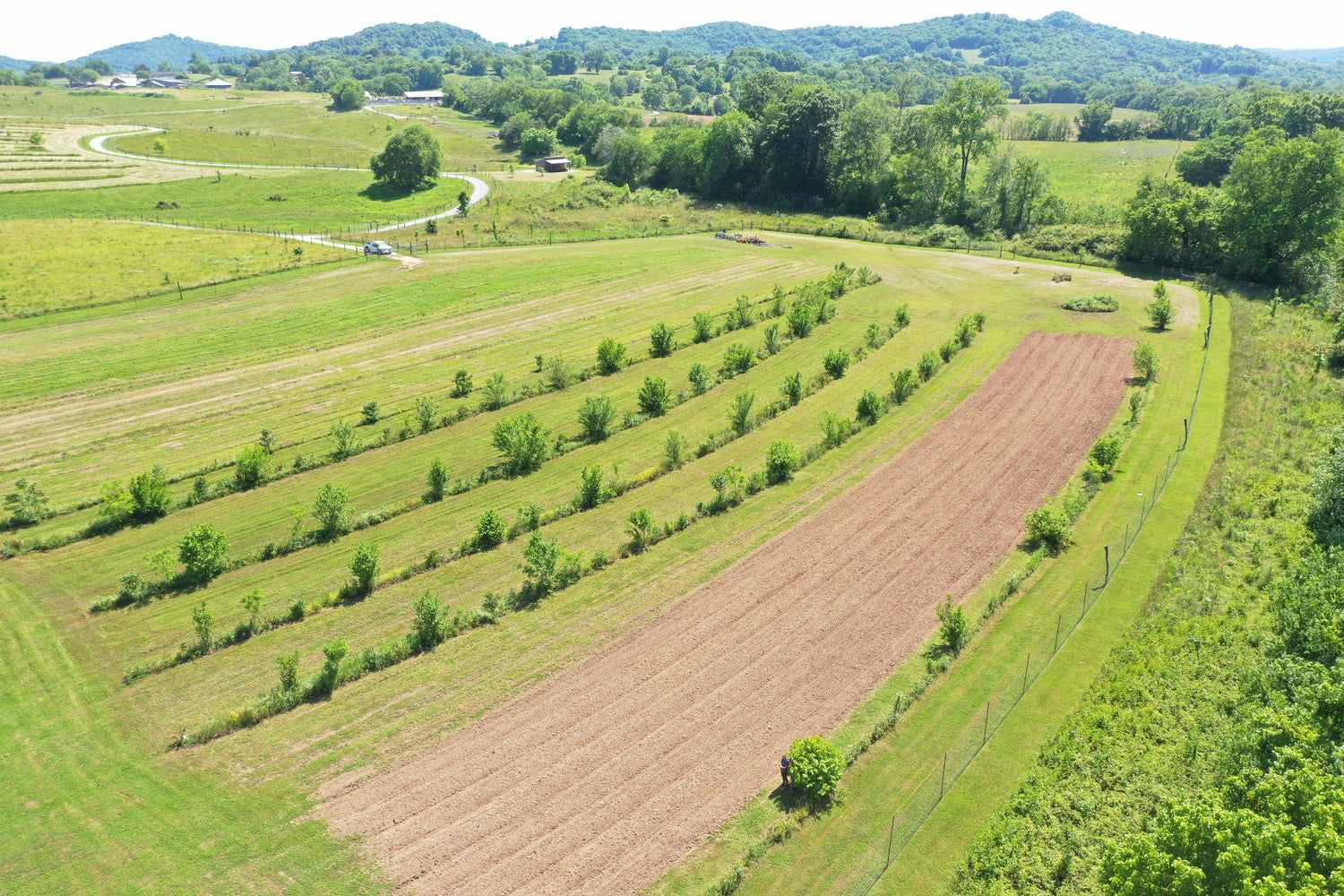
Integrated Tree Crops
In some cases the trees themselves provide a harvestable yield - on our farm we grow chestnuts and apples integrated with our sheep pastures, and mulberries, persimmons and other fruits integrated with our vegetable growing areas. This creates complex ecological relationships where the trees provide shade, habitat and nutrient cycling to the system as a whole, in addition to increasing the quantity. diversity and resilience of the food produced.
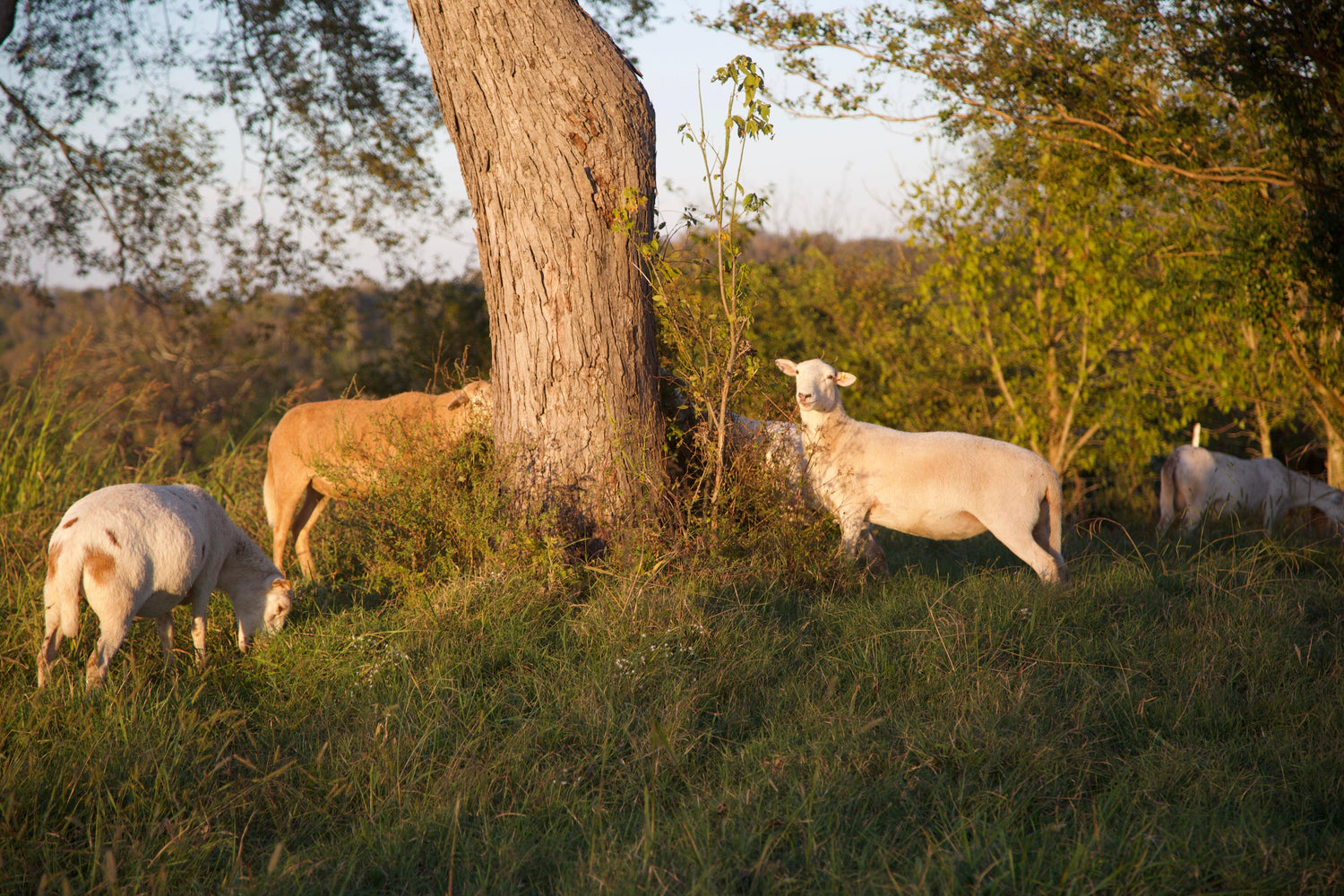
Silvopasture
Silvopasture integrates trees into grazing systems, which can provide a host of benefits to farms and the ecosystems they belong to. In some of our pastures, fast-growing poplars provide shade for both the cows and the grass, reducing heat stress for the animals and maintaining soil moisture for the plants. In other fields, chestnuts provide a yield of nut crops while creating shade for the sheep, while support trees like oaks and native plum also provide food and habitat for birds.
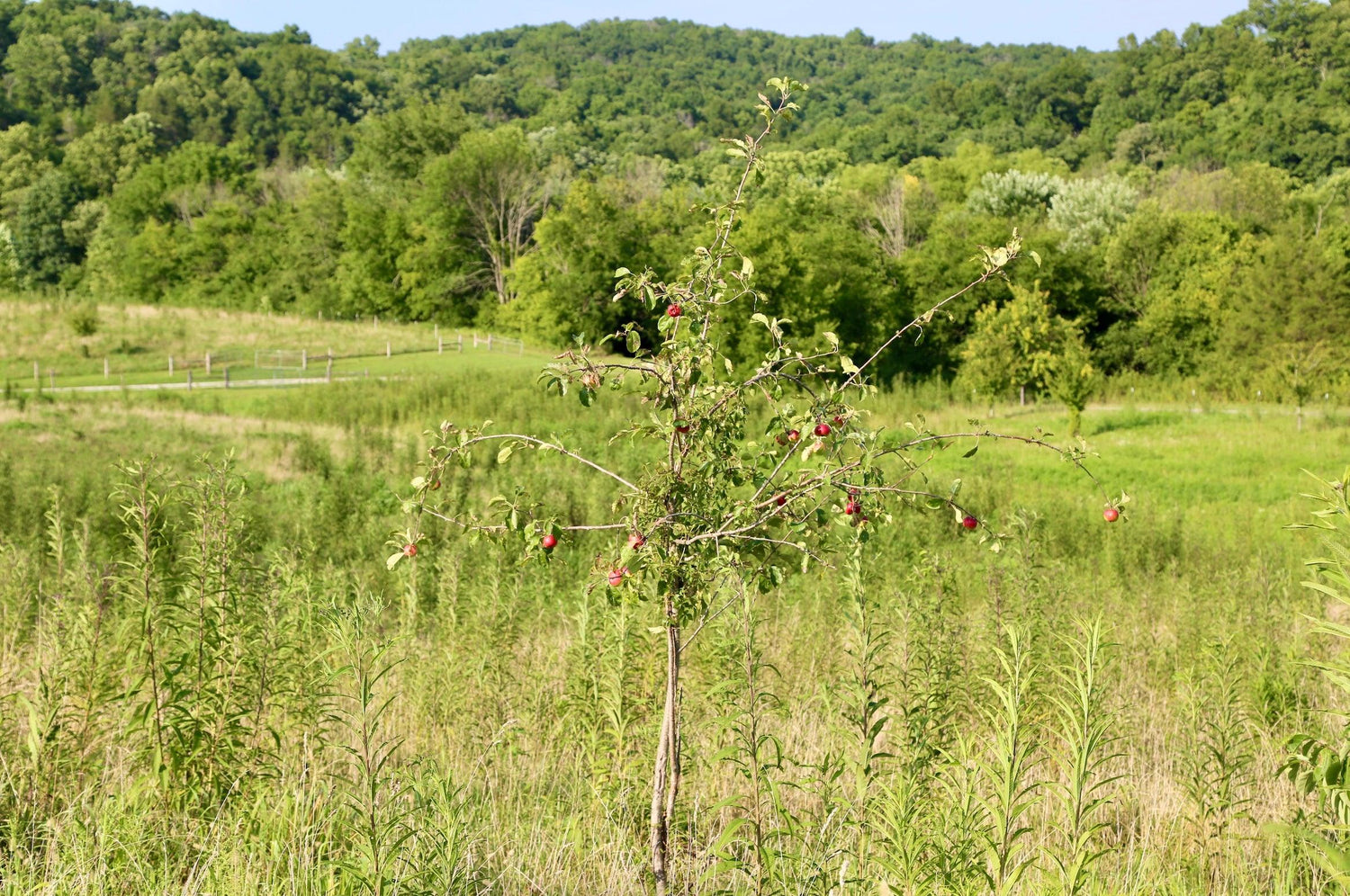
Nutrient Cycling
These agroforestry practices supercharge the farm’s ability to cycle nutrients. The deep roots of the trees have access to minerals that crops and grasses may not be able to reach, and cycle them through their leaves back into the upper horizons of the soil. And trees are busy every day turning carbon from the atmosphere into wood and bark, which we cycle back through the farm by pruning, chipping and composting branches, so that the carbon helps to feed our soil and crops.
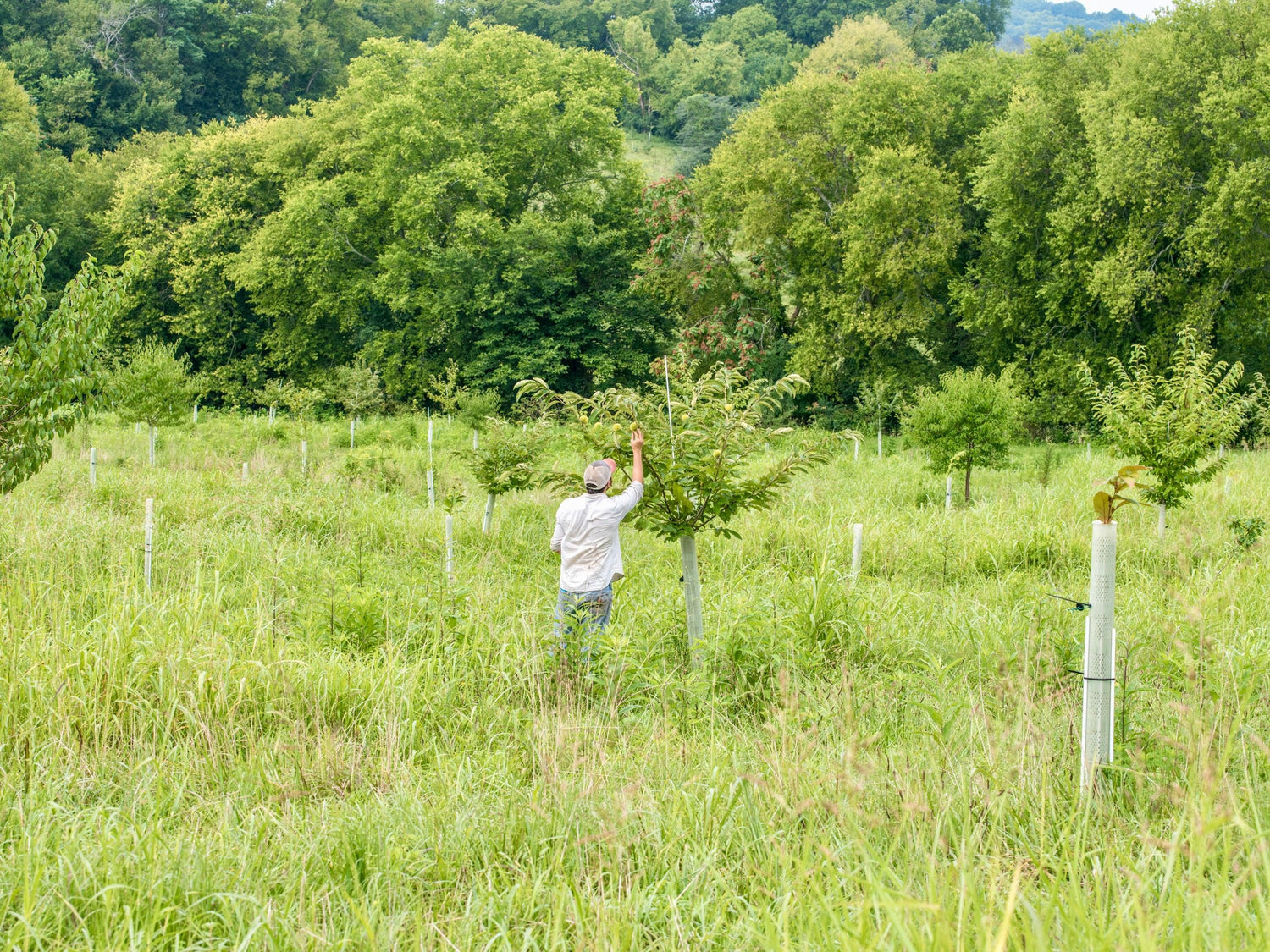
Ecological Infrastructure
Trees, shrubs and wooded areas form the backbone of our farm’s ecosystem. Hedgerows and wooded edges form ecological corridors that keep the diversity of habitat in the landscape high, even as we create simpler, more manageable ecosystems in the production areas. These hedges and edges, especially where they’re concentrated around riparian areas, help to mitigate overground water flow and prevent erosion. Trees within the production systems themselves create the microclimates in which our food crops and livestock thrive, while their products enhance our resilience in volatile climatic and economic circumstances.
Save 10% on your first purchase
Never miss our updates about new arrivals and special offers
